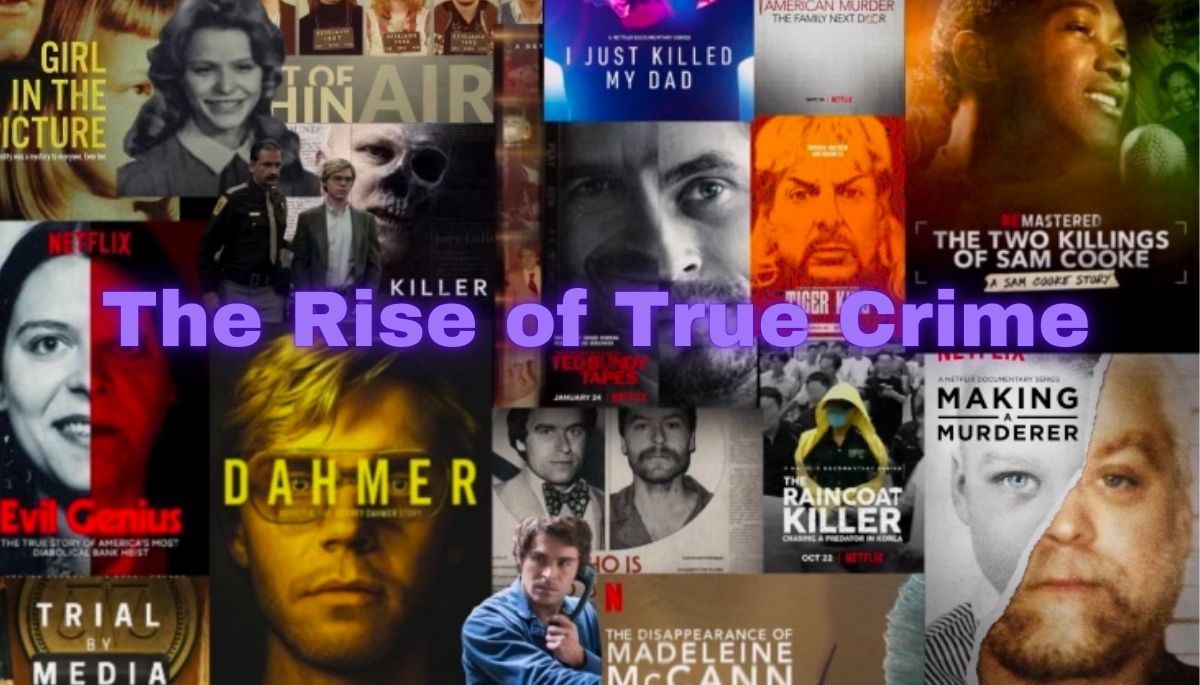The true crime genre has become a full-blown cultural phenomenon over the past decade.
From binge-worthy Netflix documentaries to chart-topping podcasts, stories of real-life murders, scams, and other crimes have captivated audiences and spawned a multi-billion-dollar industry.
However, as true crime content proliferates across media platforms, critics raise concerns about the ethics and real-world impacts of turning tragedy into entertainment.
Netflix has used AI-generated images in a new true crime doc ‘WHAT JENNIFER DID’ to present Jennifer Pan as happy & confident before she was convicted of murder.
— DiscussingFilm (@DiscussingFilm) April 18, 2024
Use of AI tools is not disclosed in the credits.
(Source: https://t.co/MYN1n1WTF0) pic.twitter.com/DdV5zea1oh
While some true crime series highlight flaws in the justice system, many more seem to prioritize sensationalism over sensitivity.
“I’m so tired of murder victims being used as cash cows,” said Charlie Shunick in a viral TikTok video addressing true crime podcasts that covered her sister’s murder without consulting the family.
Her sentiment echoes a growing backlash against what many see as the exploitative nature of the true-crime boom.
The Rise of the True Crime
The current true crime wave can be traced back to the massive success of the Serial podcast in 2014, which drew millions of listeners to the story of Adnan Syed’s murder conviction.
Soon after came Netflix’s Making a Murderer, spawning a seemingly endless stream of true crime docuseries.
By 2019, true crime had become the fastest-growing genre in podcasting, with five of the top 10 most popular shows falling into the category.
According to media tracking firm Parrot Analytics, the number of true crime documentary series on streaming services grew by 63% between 2018 and 2021.
True crime has become a big business due to its popularity.
Top podcasts like “My Favorite Murder” have spun off into touring live shows and merchandising empires.
Netflix has made true crime content a cornerstone of its strategy, churning out viral hits like Tiger King and The Tinder Swindler.
For creators and platforms, true crime offers an endless well of compelling real-life stories that can be churned out relatively cheaply.
“You know what’s cheaper than making a movie? Generating media from actual crimes, actual trials…you’re never going to run out of material,” explained writer Sarah Marshall.
Regardless, critics argue this profit motive leads to ethical compromises in how sensitive stories are told.
“If they really care about victims, they would cover cases where people are begging for support,” said Charlie Shunick.
“If [they’re] covering cases that are solved, that can be looked up easily, that millions of people are already familiar with, that are over a decade-plus old, there’s only one reason why they’re doing that.”
The Toll On Victims And Survivors
For the families of murder victims, seeing their loved one’s tragedy turned into fodder for entertainment can be deeply painful.
Rita Isbell, whose brother was killed by Jeffrey Dahmer, expressed her anger at Netflix’s dramatized series about the murders:
“I feel like Netflix should’ve asked if we mind or how we felt about making it. The victims have children and grandchildren. If the show benefited them in some way, it wouldn’t feel so harsh and careless. It’s sad that they’re just making money off of this tragedy. That’s just greed.”
Even when families are consulted, the massive reach of popular true crime series can lead to fresh waves of harassment and conspiracy theories.
Podcasts and docuseries that re-examine old cases often encourage amateur sleuths to conduct their own investigations, leading to real-world consequences.
“I don’t think it’s a normal thing to comb through a murder victim’s Instagram. That’s such a violation,” said writer Emma Berquist, herself a survivor of a violent crime.
She argues that true crime obsession is “rotting our brains” by keeping audiences in a state of perpetual fear and paranoia.
Skewed Perceptions Of Crime And Justice
Beyond the impact on individual victims, critics worry that the true crime boom is warping public understanding of crime and the legal system.
Despite crime rates being near historic lows in the U.S., the constant stream of sensationalized stories can make people feel less safe.
“Being in that state of sort of hyper-awareness, especially right now when we’re already so divided and distrustful of one another, I don’t think it’s healthy,” said Berquist.
The genre’s focus on serial killers, stranger abductions, and other statistically rare crimes may also be skewing perceptions of what types of violence are most common.
Meanwhile, the narrative conventions of true crime storytelling – emphasizing twists, cliffhangers, and neatly resolved mysteries – rarely reflect the messy realities of actual criminal investigations.
This can create unrealistic expectations when true crime fans are on real juries.
The “CSI effect” refers to jurors who expect forensic evidence in every case based on what they’ve seen on TV.
Now prosecutors worry about potential jurors who think they’re experts on interrogation techniques or DNA evidence from bingeing true crime shows.
Perpetuating Racial Biases
Perhaps the most pernicious impact of the true-crime boom is how it reinforces longstanding racial biases in media coverage of crime.
Despite men of color being disproportionately victims of violent crime, true crime overwhelmingly focuses on white female victims.
The Gabby Petito case in 2021 reignited criticism of “missing white woman syndrome” – the tendency for crimes against young, attractive white women to receive vastly more attention than similar cases involving people of color.
“Even though men of color are disproportionately the victims of violent crime, true crime retains an outsize focus on violence against white women,” noted Lindsey Webb, a criminal defense lawyer and law professor.
She drew a line from this focus to older racist “danger narratives” that used white female victimhood to cast people of color as inherently criminal.
True crime shows can make racial unfairness in the justice system worse by showing biased stories.
The Case For Ethical True Crime
Despite these criticisms, defenders of the genre argue that well-made true crime content can serve an important social purpose.
Series like “In the Dark” have used in-depth reporting to expose flaws in law enforcement and overturn wrongful convictions.
“I think true crime has been a net positive for future defendants or existing defendants because the system is getting a lot of pressure because of what is being exposed,” said Rabia Chaudry, an attorney and podcast host.
Others point out that true crime’s audience skews heavily female, and the genre can empower women with knowledge about how to protect themselves in a still-violent patriarchal society.
The key seems to be striking a balance between compelling storytelling and ethical, journalistically rigorous reporting.
The best true crime content centers on the experiences of survivors and victims’ families rather than glorifying killers.
It uses its platform to interrogate systemic injustices rather than simply gawking at individual crimes.
In the wake of racial justice protests in 2020, some true crime creators have tried diversifying their storytelling and confronting the genre’s blind spots.
Popular podcasts like Crime Junkie have pivoted to covering how the justice system overlooks marginalized groups.
“The fact that people are even asking these questions and talking about Missing White Woman Syndrome is new,” said writer Elon Green.
“I think it’s actually refreshing that people are questioning the nature of the racial aspects of crime coverage.”





[…] the podcast “Girls’ Night with Tom Brady,” which ranks among the top 50 comedy podcasts on […]